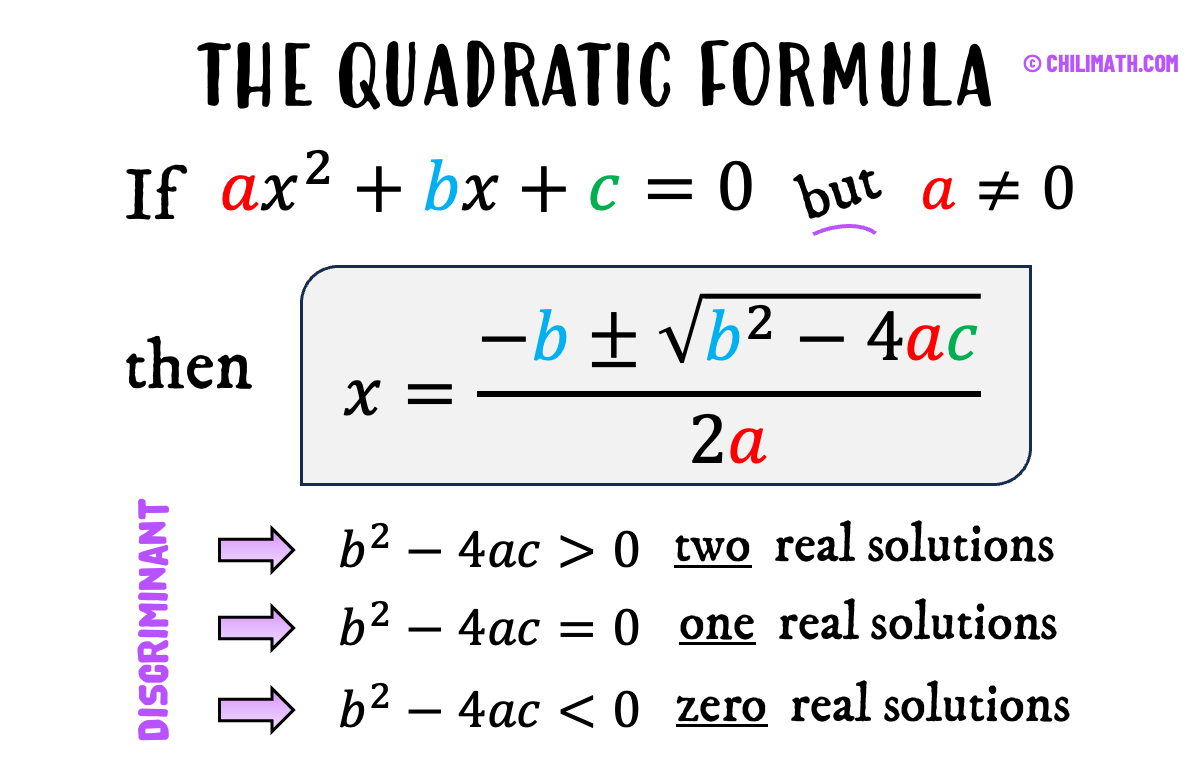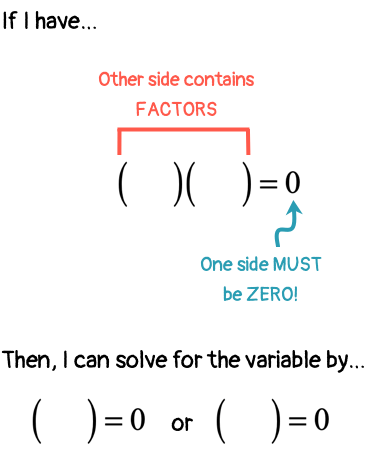This week in math we learned about a specific part of the quadratic formula called the discriminant that can help you determine the solution of a quadratic equations faster. I choose this because it sounds like a useful tool to use on the mid term. it is important because in can save us the work of having to go through the entire quadratic formula if there isn’t any solutions and allows us to use other much faster ways of solving such as inspection and the area model while knowing how many solutions there will be and wether or not they will be rational or irrational.
- Sure, I can explain how to use the discriminant formula step by step. The discriminant is a part of the quadratic formula used to determine the nature of the solutions of a quadratic equation. Here’s how you use it:1. Understand the Quadratic Equation: First, make sure your equation is in the form of
, where ( a), ( b ), and ( c ) are constants, and ( x ) is the variable.2. Identify the Coefficients: Identify the values of ( a ), ( b ), and ( c ) in your quadratic equation. For example, if your equation is
, then a = 2 , b = 5, and c = -3.3. Calculate the Discriminant: The discriminant (\( \Delta \)) is calculated using the formula
. Substitute the values of a, b , and c into this formula and perform the calculation. Continuing with the example,
.4. Analyze the Discriminant:
– If, the quadratic equation has two distinct real solutions.
– If, the quadratic equation has one real solution (a repeated root).
– If, the quadratic equation has no real solutions (the solutions are complex).5. Find the Solutions (If possible):
– If, use the quadratic formula
to find the two distinct real solutions.
– If, the repeated root is given by
.
– If, there are no real solutions.
Example:
let’s solve the quadratic equation \( 8x^2 – 10x + 3 = 0 \) using the discriminant formula.
1. Identify the Coefficients:
– \( a = 8 \)
– \( b = -10 \)
– \( c = 3 \)
2. Calculate the Discriminant:
–
–
–
–
3. Analyze the Discriminant:
– is greater than 0, which means the quadratic equation has two distinct real solutions.
4. Find the Solutions:
– Use the quadratic formula to find the two solutions:
–
–
So, the solutions to the equation are
and
.
Would you like to try another example or explore anything else related to quadratic equations?





 https://study.com/learn/lesson/foil-method-math-overview-examples.html
https://study.com/learn/lesson/foil-method-math-overview-examples.html

